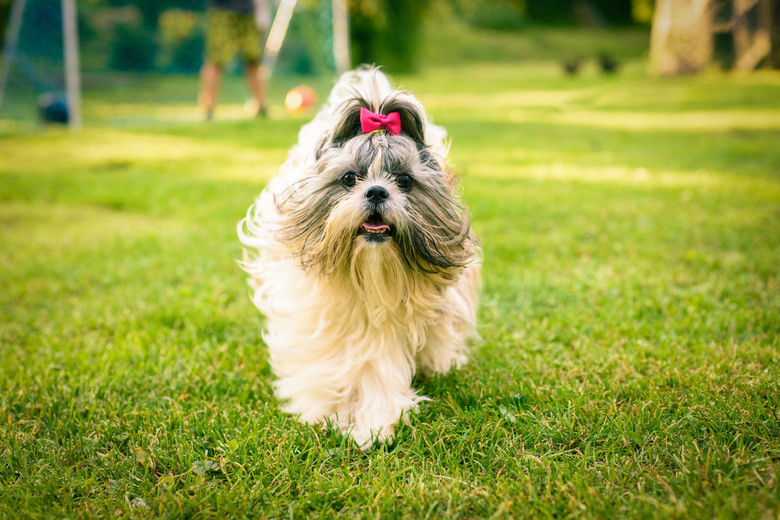Dog Hair Vs. Fur: What's The Difference Between Dog Hair & Dog Fur?
They aren't called furry friends for nothing: Most dogs have some form of fur or hair covering their adorable body, unless you're dealing with a so-called hairless breed, like the xoloitzcuintli — but even they have a bit of hair too. What you might not know is that fur and hair are two distinct things that are similar but have a different feel and growth cycle. Plus, they require slightly different care. From the silky texture to the longer growth cycle, dog hair is different from the shorter dog fur in several ways, and dogs with hair may even be better for people with dog allergies.
What's the difference between hair and fur?
What's the difference between hair and fur?
While both hair and fur are made of keratin, a type of protein found in skin and nails, they are not exactly the same thing. They are biologically similar, but fur tends to be shorter and more densely packed than hair, with many more follicles per square inch of pup.
Dogs with fur either have a single coat of it or a double coat, typically with a protective outer coat and softer undercoat. Dogs with hair will only have a single coat. Hair generally has a silkier and smoother feel than fur. Plus, some dogs with hair may have curly hair, while others have straight hair.
Dog hair vs. fur
Dog hair vs. fur
The most important distinction between dog hair vs. fur is the growth cycle of each. Both hair and fur go through four phases of growth from the time it first appears to the time it falls out. These growth phases are:
- Anagen phase, which occurs when the hair or fur follicles first grow in.
- Catagen phase, which happens as the hair or fur follicles stop growing and attach to the sheath of the root.
- Telogen phase, which occurs when the hair is simply not growing or changing.
- Exogen phase, which happens when the follicle sheds the hair and it falls out.
After the exogen phase, the cycle starts again as new hair or fur grows in to replace the strands that are lost. Although both hair and fur go through these four cycles, dogs with fur complete the cycle much more quickly than those with hair. Pups with hair remain in the anagen phase for a longer period of time than those with fur, which is why their hair grows longer than fur.
Do all dogs shed?
Do all dogs shed?
Dogs with fur tend to shed more frequently than dogs with hair because of the shorter growth cycle. Most dogs will shed the most seasonally in spring and fall when their exogen phase is the longest. Some double-coated dogs, like golden retrievers, will shed year-round.
Because dogs with hair tend to shed less than their furry counterparts, people wrongly assume that they are hypoallergenic. This is not the case, as no dog is truly hypoallergenic. That's because allergies to canines are actually triggered by a type of protein in the dog's dander and saliva.
All dogs produce this allergy-causing protein, but hair-coated dogs will shed less of their dander and fur around your home. Therefore, people with allergies may do better with dogs who have hair, including poodles, Yorkshire terriers, Afghan hounds, and silky terriers.
Dog fur and hair care
Dog fur and hair care
All dogs, including those with hair or fur, will need regular brushing to keep their coat from becoming a matted mess that ends up all over your clothing and couch. In the case of dogs with fur, more frequent brushing is needed because it tends to shed faster than hair.
Dogs with hair will still need to be brushed and may even need the occasional trim, like the Shih Tzu and Maltese, because their hair will grow much longer than the coat of a dog with fur.
References
- Pets Magazine: Is There a Difference Between Dog Fur and Dog Hair?
- Splash and Dash Groomerie & Boutique: Do Dogs Have Hair or Fur? And How Can I Tell?
- American Kennel Club: Hypoallergenic Dogs
- Brookfield Animal Hospital: Fur Facts
- American Kennel Club: Dog Shedding: What to Expect And How to Manage It
- King Kanine: The Ultimate Guide to Dog Breeds with Hair (NOT Fur)
